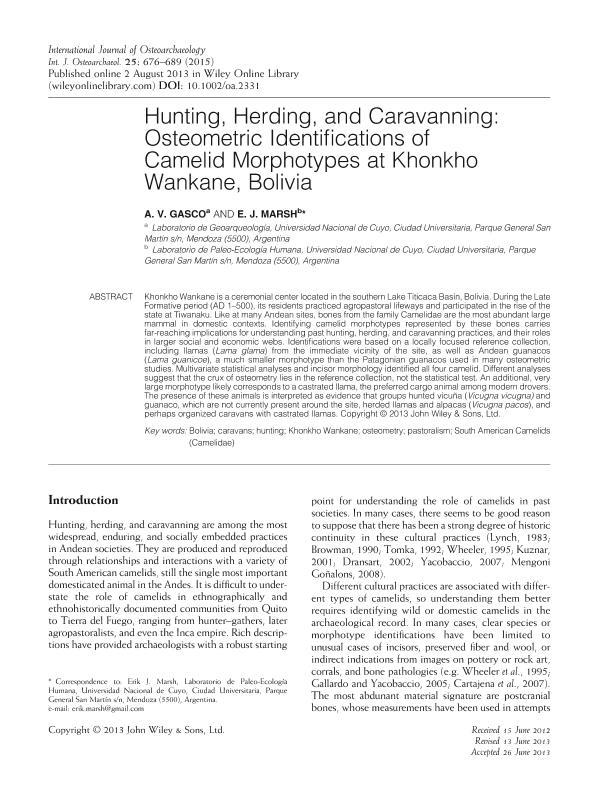Artículo
Hunting, Herding, and Caravanning: Osteometric Identifications of Camelid Morphotypes at Khonkho Wankane, Bolivia
Fecha de publicación:
09/2015
Editorial:
John Wiley & Sons Ltd
Revista:
International Journal of Osteoarchaeology
ISSN:
1099-1212
Idioma:
Inglés
Tipo de recurso:
Artículo publicado
Clasificación temática:
Resumen
Khonkho Wankane is a ceremonial center located in the southern Lake Titicaca Basin, Bolivia. During the Late Formative period (AD 1-500), its residents practiced agropastoral lifeways and participated in the rise of the state at Tiwanaku. Like at many Andean sites, bones from the family Camelidae are the most abundant large mammal in domestic contexts. Identifying camelid morphotypes represented by these bones carries far-reaching implications for understanding past hunting, herding, and caravanning practices, and their roles in larger social and economic webs. Identifications were based on a locally focused reference collection, including llamas (Lama glama) from the immediate vicinity of the site, as well as Andean guanacos (Lama guanicoe), a much smaller morphotype than the Patagonian guanacos used in many osteometric studies. Multivariate statistical analyses and incisor morphology identified all four camelid. Different analyses suggest that the crux of osteometry lies in the reference collection, not the statistical test. An additional, very large morphotype likely corresponds to a castrated llama, the preferred cargo animal among modern drovers. The presence of these animals is interpreted as evidence that groups hunted vicuña (Vicugna vicugna) and guanaco, which are not currently present around the site, herded llamas and alpacas (Vicugna pacos), and perhaps organized caravans with castrated llamas.
Archivos asociados
Licencia
Identificadores
Colecciones
Articulos(CCT - MENDOZA)
Articulos de CTRO.CIENTIFICO TECNOL.CONICET - MENDOZA
Articulos de CTRO.CIENTIFICO TECNOL.CONICET - MENDOZA
Citación
Gasco, Alejandra Valeria; Marsh, Erik Johnson; Hunting, Herding, and Caravanning: Osteometric Identifications of Camelid Morphotypes at Khonkho Wankane, Bolivia; John Wiley & Sons Ltd; International Journal of Osteoarchaeology; 25; 5; 9-2015; 676-689
Compartir
Altmétricas




